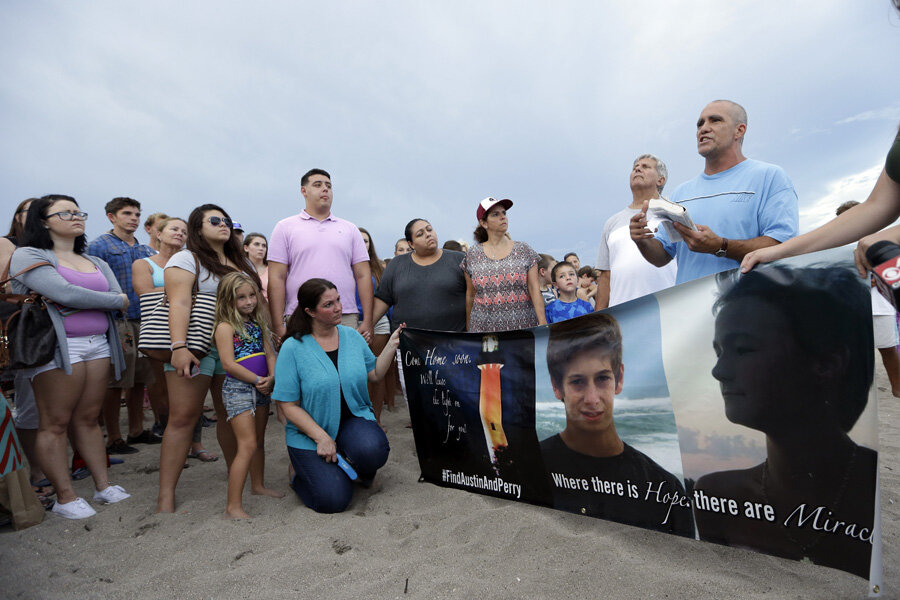Families of teens missing at sea cling to stories of miracle rescues
Loading...
As search for two missing teens in Florida went into a seventh day, the boys' families are hoping for a miracle to happen.
The Coast Guard says it is still actively searching for 14-year-old teens and is focusing off the South Carolina coastline.
The search has already covered an area of nearly 40,000 square nautical miles, stretching from the waters off South Florida up through South Carolina.
Chief Petty Officer Ryan Doss said Friday there were no immediate plans to call the search off since it was believed there was a chance Perry Cohen and Austin Stephanos were still alive.
Mr. Doss added that they are trying to estimate how long people can survive adrift, which is not an easy guess when it is not clear whether the boys had flotation devices or drinking water.
One expert previously told the Associated Press that the vague rule of thumb is that humans can survive three days without water and three weeks without food, but other elements might prolong the timeline, especially if people have supplies, wear life jackets, or can cling to something. There has been some speculation that the boys may have a cooler that could theoretically be used as a flotation device and may have contained water and food.
Last Friday the teenagers from Tequesta, Florida, were on a fishing trip when a line of summer storms moved through the area. When they didn’t return on time, the Coast Guard started its search. Their 19-foot boat was found overturned Sunday off Ponce Inlet, more than 180 miles north of where the boys started their journey.
There is no clue about their whereabouts, but many still hope for miracle, as has happened before.
In 2005, two South Carolina teens were swept out to sea on their small sailboat during a storm. It was widely believed that they had not survived the storm but the teens were found alive after nearly a week at sea. But there is a difference: Unlike the Florida teens, they were still aboard their boat.
Each year, dozens of boaters die or go missing in Florida waters.
In 2013, the state had 62 boating-related fatalities, including eight boaters go missing, according to the state Fish and Wildlife Conservation Commission. Last year, there were 73 boating related fatalities, including four missing persons.
This report includes material from the Associated Press.






